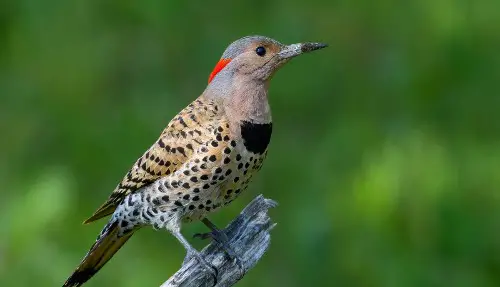When we think of New York state, we picture some flashing billboards, busy streets, and the skyscrapers that have helped define the Big Apple's skyline for centuries.
Did you know that this state has lots more to offer? Other than being home to one of the safest cities in the United States, New York State has over 400 captivating bird species that can be heard and seen all over the Empire State, including several woodpeckers. So, if you want to know more about the numerous woodpeckers of NY, then please read on!
introducing the New York Peckers!
There are several woodpeckers in NY state that call the state's huge forests and woodlands homes like the Red-bellied Woodpeckers and Downy Woodpeckers. Some of the common New York woodpeckers that migrate to this state during the breeding season include the Northern flicker, Pileated woodpecker, and the Red-headed woodpecker.
Unfortunately, woodpeckers are usually seen less or more at certain times every year. Some of the common types of woodpeckers in NY include:
1. Red-Bellied Woodpecker
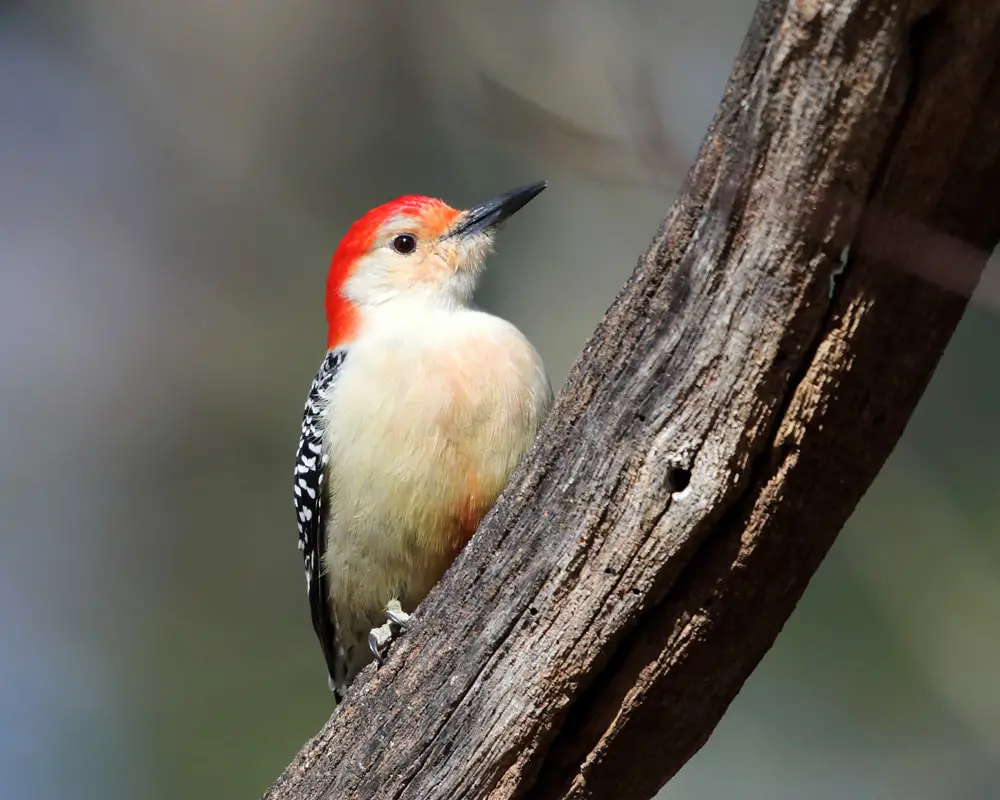
Even though they aren't widespread in New York State, you can find a year-round population of the Red-bellied Woodpecker in the southern parts of the US. It is a common woodpecker in NY. It's even way more popular than the Red-headed woodpecker!
Unfortunately, most folks have mistaken the Red-bellied woodpecker for the Red-headed Woodpecker, thanks to the red markings on its head. The other parts of the plumage are pale, with some white and black barring on their back.
They can be found in the forests and woodlands, especially near water bodies. And being an adaptable bird, the Red-bellied woodpecker can also be spotted in urban settings like suburbs and parks. Therefore, learning their rolling call can help you find them easily.
The Red-bellied woodpecker tends to call frequently and loudly; therefore, this is the best time to venture into the woods and search for these woodpeckers.
Interestingly, the Red-bellied woodpecker can stick its tongue 2 inches past its beak; plus, its tongue has a sticky spit and barbed tip, which help them access its prey in deeper crevices.
These birds love suet, so you should try an upside-down feeder, and they will come to your backyard and bully other birds and squirrels. You can also find them on hummingbird feeders, where they will be feeding on fruits.
2. Pileated Woodpecker
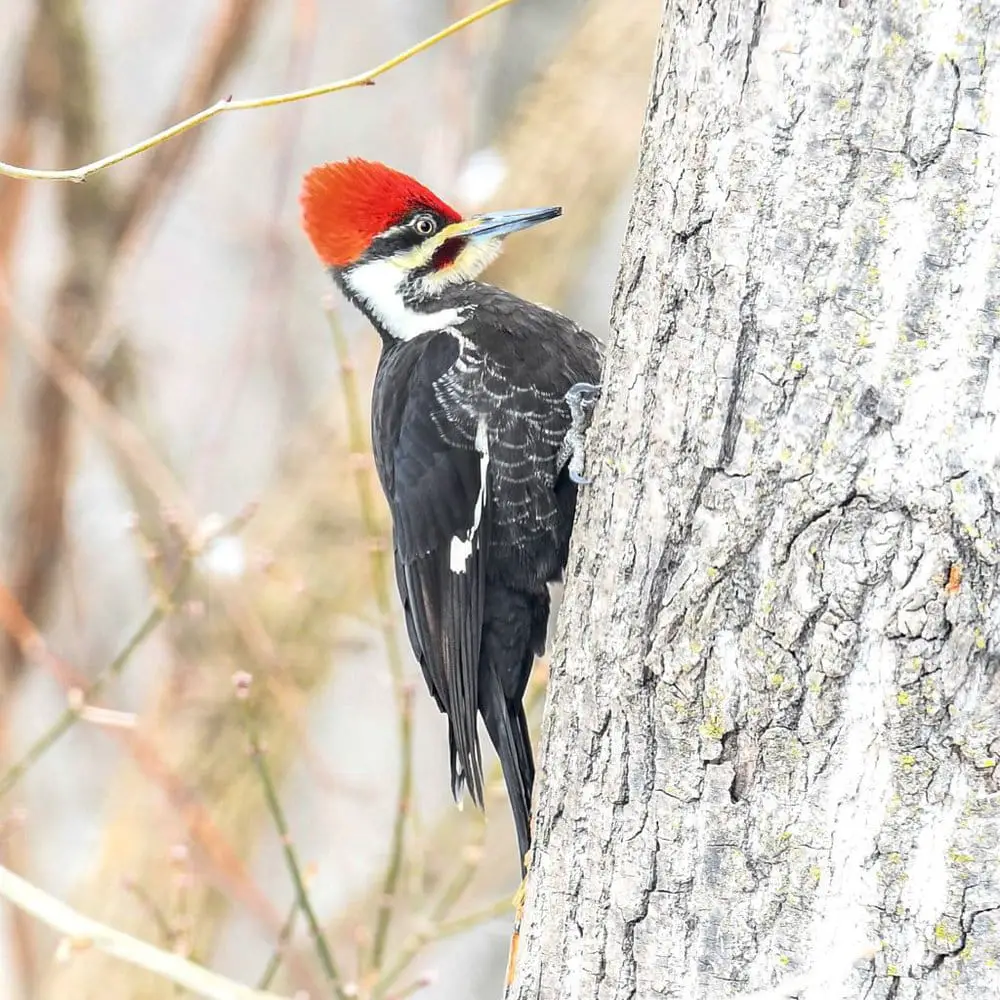
If you're looking for the largest North American woodpecker, then you should visit the Empire states and look for a Pileated woodpecker. They are near the size of crows and weigh about 12.3oz.
Pileated woodpeckers can be found in New York all year round, plus finding this woodpecker in NY can be quite easy.
After all, you can hear the pileated woodpeckers before seeing them thanks to their high-pitched, loud whinny or drumming of the trees with the chisel-like bill.
You can find them in forests with tall trees and rotting, downed logs looking for carpenter ants. One of the key things you have to look out for are several rectangular-shaped holes on trees! These woodpeckers can be commonly seen in summer in the southern parts of New York State.
This huge North American woodpecker has some bold white stripes below its neck and a massive flaming-red crest. The dead logs serve as a nesting site for the pileated woodpecker, and it always builds a new nest each year and leaves the old one for other birds.
They feed on mealworms, peanuts, hulled sunflower seeds, suet, and black oil sunflower seeds.
3. Hairy Woodpecker
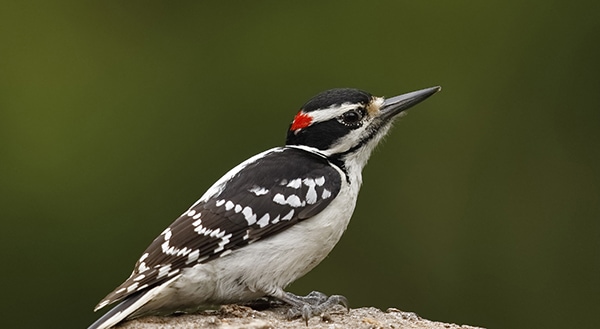
Another woodpecker species that can be found all year round in the woodlands of New York is the Hairy Woodpecker. It is a huge version of the Downy woodpecker, and the key differences between the two are their bill length and size, with the Hairy woodpeckers having longer bills.
The hairy woodpeckers stick to trees when foraging and can be seen perched around trunks or sides of trees. But they require more forested regions and taller trees than the Downy Woodpeckers. Plus, a hairy woodpecker is unlikely to appear in your backyard, but it's known for visiting occasionally.
The hairy woodpecker loves taking advantage of the holes left behind by huge Pileated woodpeckers and scopes the insects left behind. They also love visiting the holes made by sapsuckers to clear the remaining sap.
These powerful tiny hairy woodpeckers of NY produce explosive peak call or whinnying sounds in the forest.
To attract a hairy woodpecker, you need a squirrel-proof suet feeder with a cage for stopping huge birds from finishing the suet. But make sure the feeder is filled with either black oil sunflower seeds or suet cakes. When in the wild, the hairy woodpecker feeds mainly on insects.
4. Downy Woodpecker
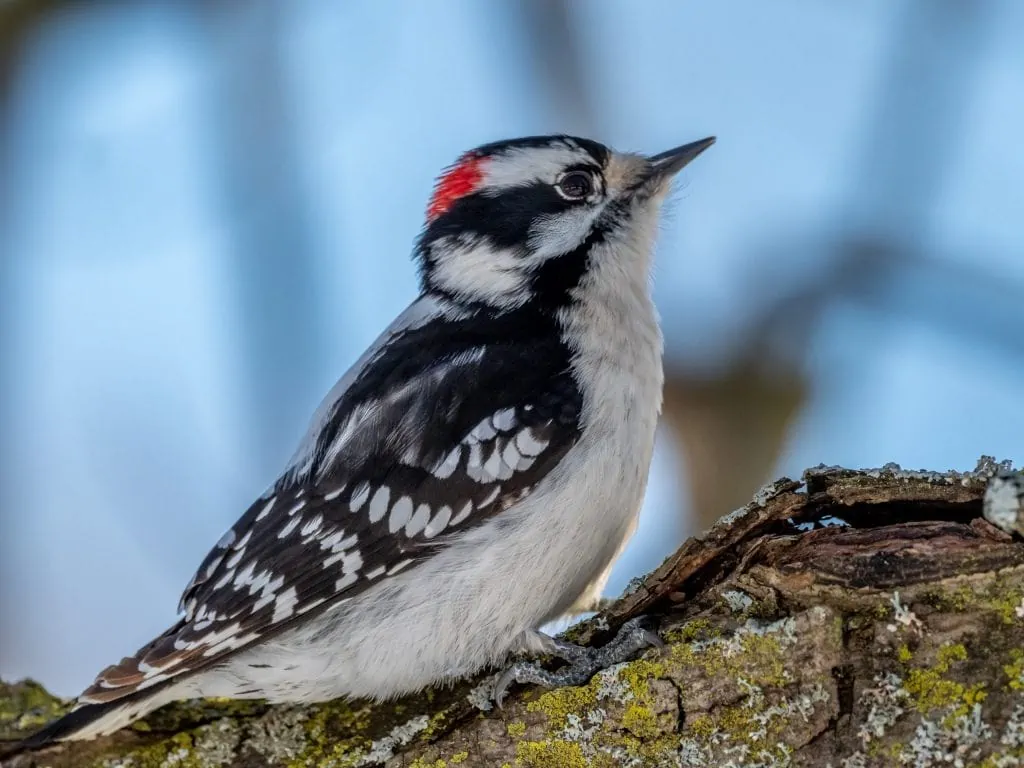
Despite being the smallest woodpecker in the United States, the Downy woodpecker is one of the most common species in our backyard feeders. These species resemble the Hairy woodpecker, but it's a third smaller and has a small beak than most woodpeckers. In fact, a huge percentage of the woodpeckers in New York that visit your feeders are usually the Downy woodpecker.
Like most NY woodpeckers, the Downy woodpecker lives year-round in this state. It can be found in a wide range of habitats, and this includes the urban parks, forest edges, open woodlands, and our backyards. And being opportunistic foragers, you should expect to find Downy woodpeckers drilling in tall trees like other woodpeckers.
Even though it mostly has a white and black patterning, the Downy woodpecker is mostly black with some white patches on its back. The most common difference between the male and female Downy woodpeckers is the red patch on the male's head.
They are common visitors to our backyard feeders, and they are very fun to watch; plus, they produce some descending whinny calls and high-pitched pik sounds.
This species is known for nesting in the cavities of dead trees and can lay about 8 small eggs.
These birds feed on nuts, larvae, grains, acorns, and berries. And to attract the Downy woodpecker to your backyard, all you have to do is build an upside-down suet feeder. This feeder can stop bullying birds and protect them from the rain.
Fun Fact: The downy woodpecker is likewise a local resident bird in Maine!
5. Red-Headed Woodpecker
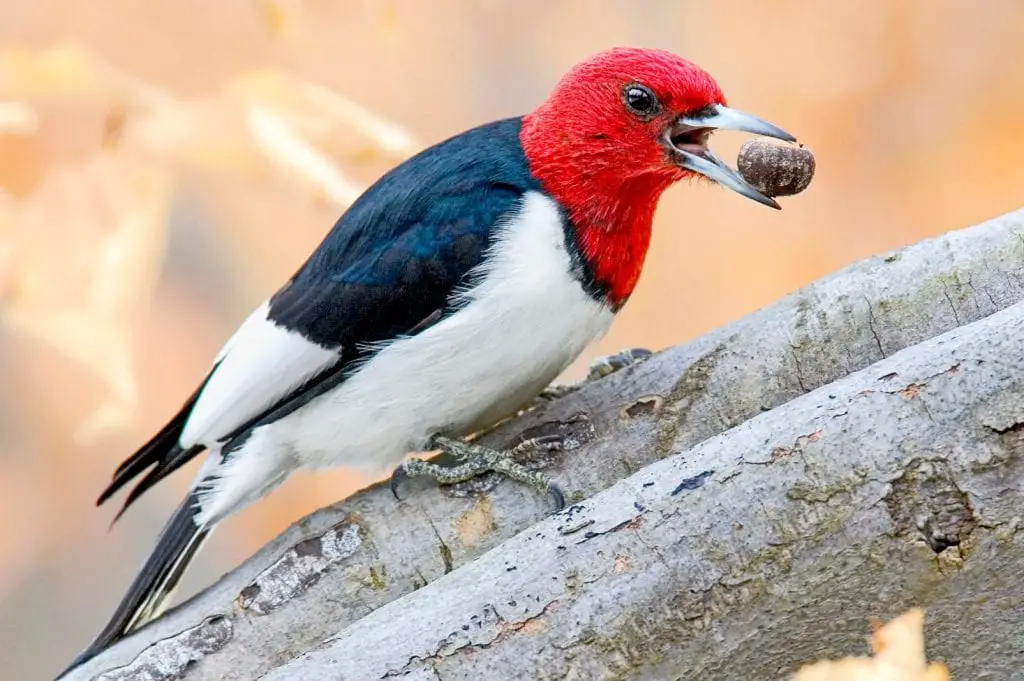
Despite being one of the most common woodpecker species in North American woodpeckers, the Red-headed woodpeckers can only be spotted in New York State during the summer breeding season before migrating in winter. Luckily, sporting the Red-headed woodpeckers can be quite easy thanks to their white and black bold marking and bright redheads.
And if you loved them while perched, wait until the Red-headed woodpeckers grace you with their white underside when flying away.
Despite their size, the Red-headed woodpecker has a powerful spike bill that they use at times to defend their territory and destroy or even remove the eggs of ducks.
And since they prefer living in small colonies, you can easily spot them in woodland with clearings, semi-open regions, and on the edge of forests. You have to listen to their sharp "weee-ah" calls and deep tapping on the trees.
Unlike most woodpeckers in New York, this is the most omnivorous species known for even catching insects in flight. Insects like the grasshoppers, honeybees, midges, and beetles make up a third of their diet, while the remaining two-thirds include plant materials.
Other than foraging tree crevices, they all consume seeds, nuts, wild fruits, insects, bird eggs, and small rodents. Unfortunately, their population declined by about 70% between 1966 and 2014, thanks to habitat loss.
6. Yellow-Bellied Sapsucker

Even though they're referred to as "yellow-bellied," these woodpecker species are not all that yellow. In fact, they may have numerous yellowish markings on the underside. They have a red forehead, black and white plumage, and some white stripes on their neck.
They are robin-sized woodpeckers, with the males having red throats and black with red foreheads. They have long wings and short bills.
The Yellow-bellied sapsucker is known to hold its feathers on its head up to a point that makes it seem alert.
Plus, their population can only be found in this state's coniferous and hardwood forests in upstate New York in summer and spring when breeding. They do love aspens and can be found nesting in the cavities of these grooves.
These birds tend to drill small, nicely spaced rows of sap holes; therefore, when looking for them in the woods, you should look for these telltales. They tend to make these holes in sugar or red maple, yellow birch, paper birch, and hickory trees. These holes help guarantee a perfect flow of sap.
Another telltale to consider when looking for these sapsuckers is the loud mewing call they produce in the woods. Even though they are rarely found near bird feeders, they can come to a squirrel-proof suet feeder with peanut butter and mealworm suets.
7. Northern Flicker
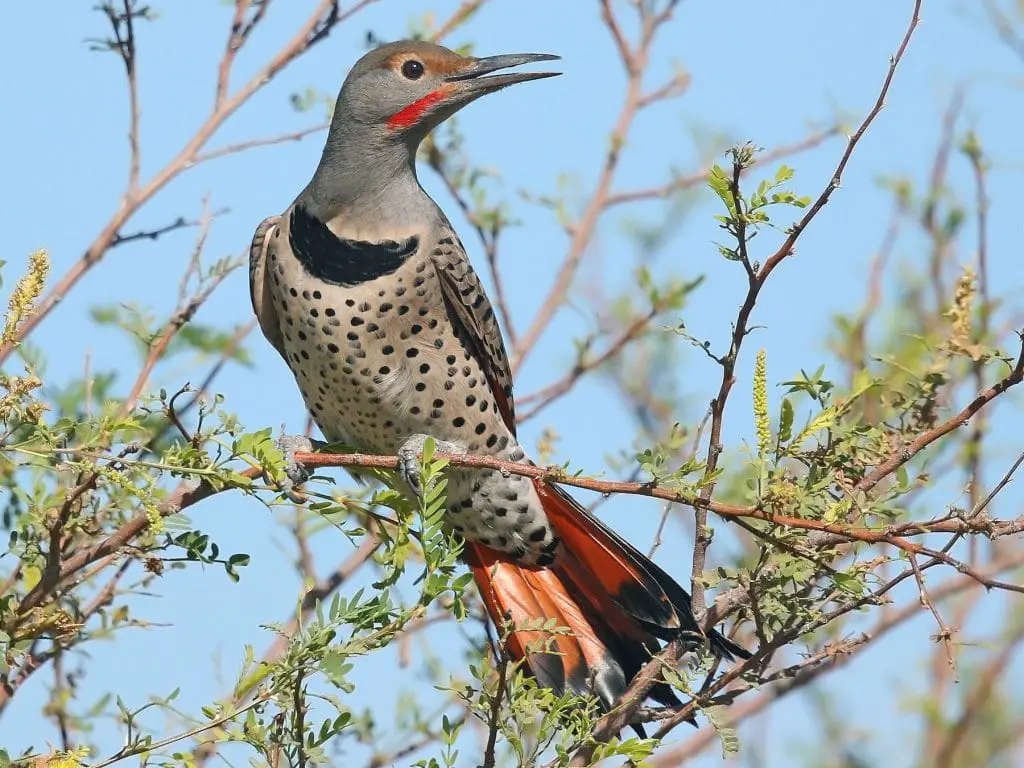
Another woodpecker species found in the southern parts of this state all year round are the Northern Flicker, but they breed in northern parts of New York before migrating. In fact, they can be found in New York in winter before migrating. They usually feed on beetles and ants, but they can also consume seeds and fruits.
The Northern flickers in this state have a yellow flash on the tails and wings, plus a white patch on their rump. Other features that make them stand out are their colorful black-spotted plumages and distinctively curved bills. They're huge birds with slim round heads.
Unlike most woodpeckers, these birds can mostly be found on the ground foraging for a wide range of insects, including ants using their slightly curved bills. And when they're on trees, they're usually perched and not on the side of the trees.
To help you find them, you can listen to their loud, piercing yelp.
8. Black-Backed Woodpecker
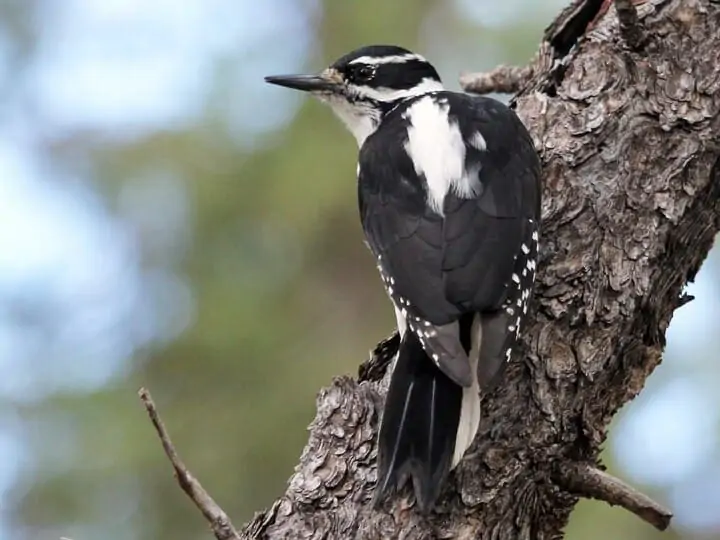
Even though it's quite uncommon, in the United States, the Black-Backed Woodpecker can be found in the northern parts of this state all year round, and they don't migrate. Unfortunately, they're only robin-sized with blackish backs; therefore, they're extremely hard to spot. These woodpecker species have a whitish under-belly and some white and black stripes on their sides.
Unlike most woodpeckers, the black-backed woodpecker has three-toes instead of the usual four.
In fact, they resemble the American three-toed woodpeckers minus the whitish patch on their back.
They specialize in consuming the larvae of wood-boring beetles, particularly in newly burned wooden regions. Therefore, you have a high likelihood of finding them in burnt forests where they're flaking the bark of dead trees. Plus, you can consider their single sharp pik call when looking for them in the forest.
Unfortunately, they cannot be found in our backyards since they can be found in a forest that has had a fire in the last 8years.
Fun Fact: Know more about these species by proceeding to read woodpeckers in Michigan!
Watch This!
Frequently Asked Questions
Do Pileated Woodpeckers Visit Backyard Feeders?
Yes. The pileated woodpecker is known for visiting our backyard feeders in search of food. In order to attract the pileated woodpecker into your backyard, you should add some suet feeders with some tail props.
Are There Woodpeckers in Queens, New York?
Yes, there are woodpeckers in Queens! In fact, they can be found in regions with huge forests where they can nest and forage. Woodpeckers can be spotted in places like North Mount Loretto-State Forest, Queens Forest Park, and Van Cortlandt Park.
Are Pileated Woodpeckers Rare?
No. The population of Pileated Woodpeckers has been growing from 1966 to 2019! In fact, the Partners in Flight estimate that their population has increased to over 2.6 million. The Continental Concern Score rates this species 7 out of 20, meaning that it is of low conservation concern.
Conclusion
New York is home to some of the most popular North American bird species, and this includes some of the most beautiful woodpeckers on the planet. In fact, woodpeckers produce some of the most admirable sounds on the planet and can help you get rid of the pests in your backyard.
If you want to see the biggest and the smallest North American woodpecker, then you should plan a visit to the Empire state. New York is home to some of the rarest woodpeckers in North America and a perfect destination for birdwatchers!

